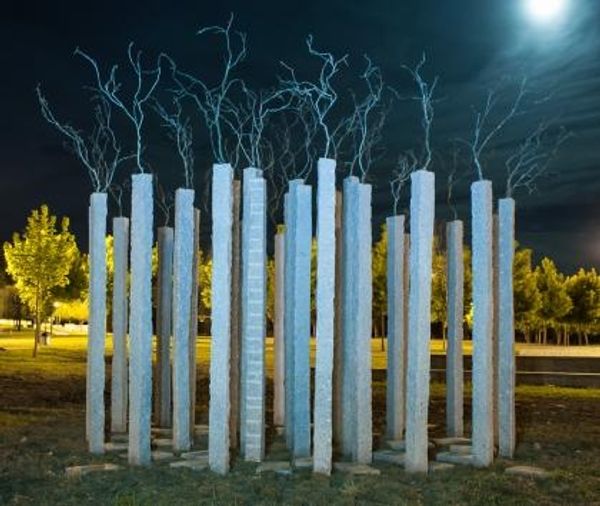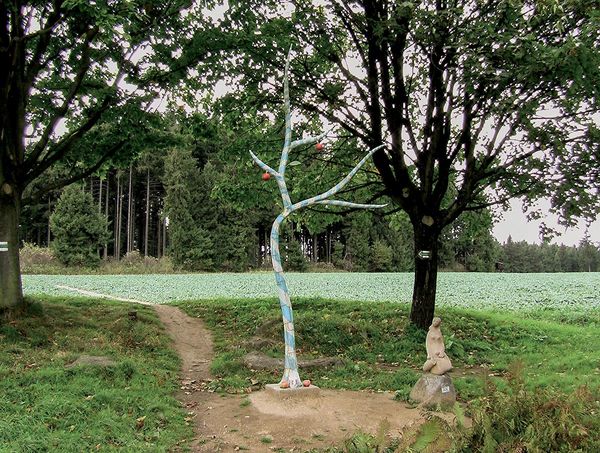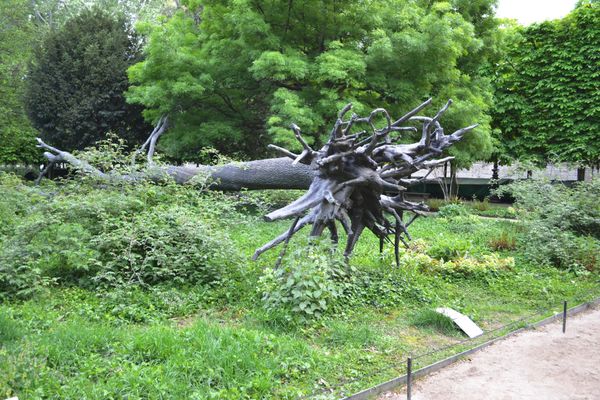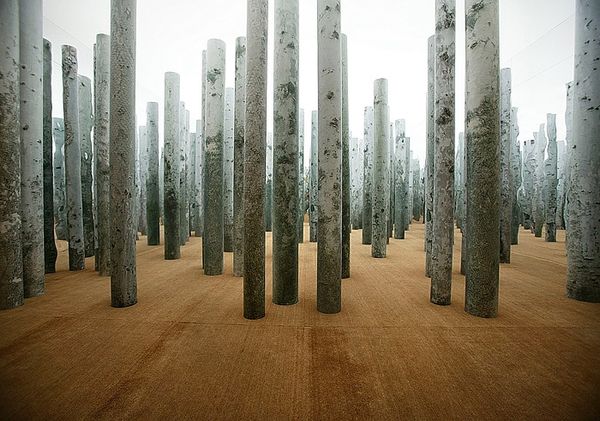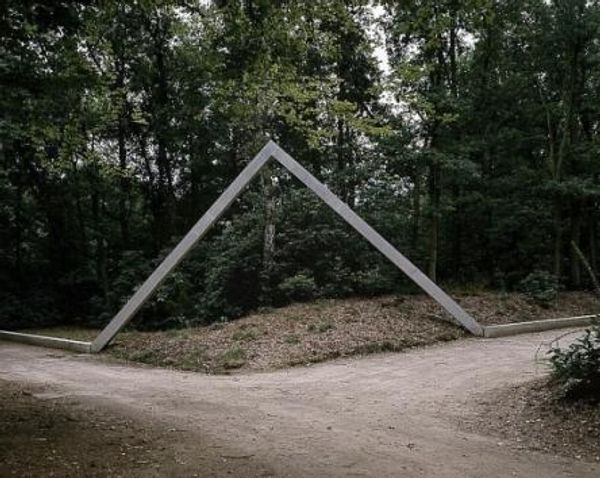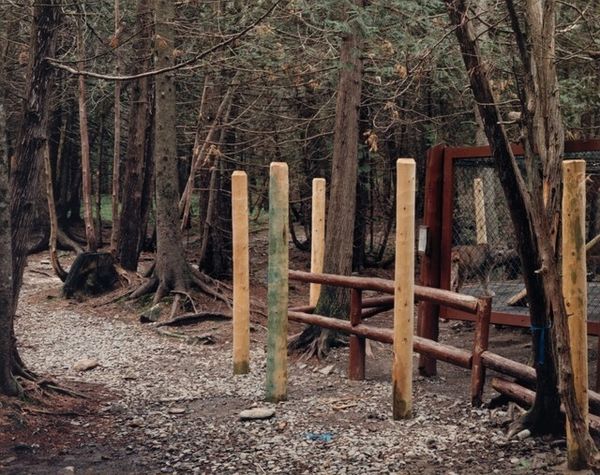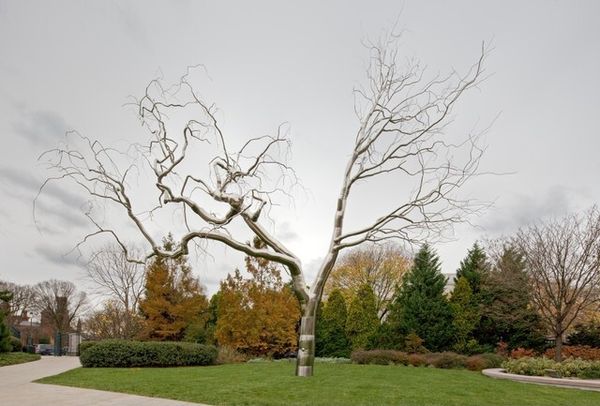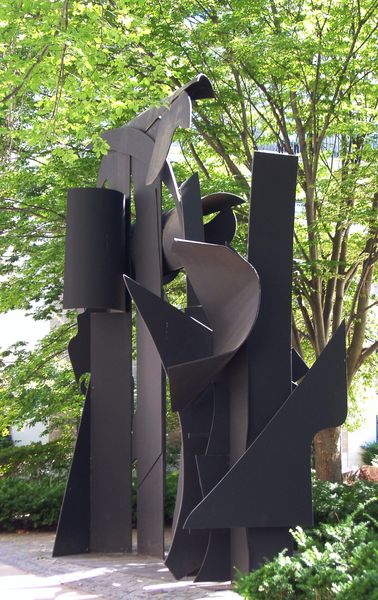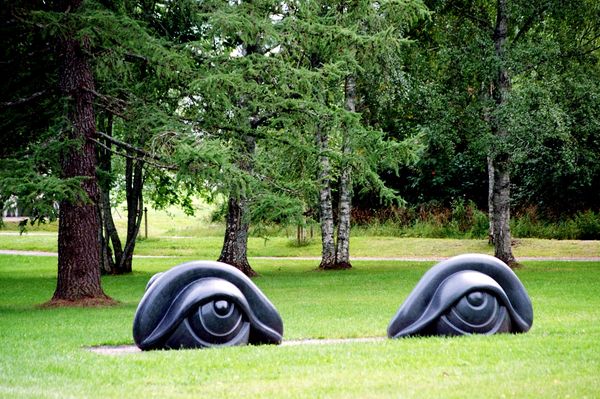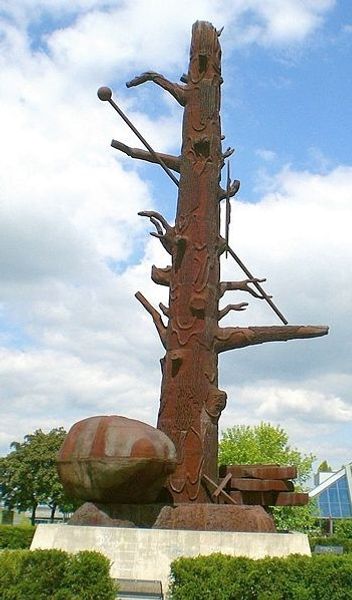
Dimensions: overall (each of 30 figures, approximately): 101 x 27.9 x 22.9 cm (39 3/4 x 11 x 9 in.) gross weight: 28 kg
Copyright: National Gallery of Art: CC0 1.0
Editor: Here we have Magdalena Abakanowicz’s ‘Puellae,’ created in 1992. These figures, crafted as an outdoor installation, have this imposing yet muted quality, almost like silent sentinels. How do you approach interpreting something like this in its socio-political moment? Curator: What strikes me first is the repetitive nature. Mass production? Individuality versus collectivity, and its manifestation after the state era? Given the period – 1992 – this work reflects the societal anxieties and shifting power structures in the wake of the political changes in Eastern Europe, including her native Poland. Abakanowicz often explored themes of identity and the human condition. Considering the site-specificity, do you feel the figures are alienated from their surrounding? Or integrated with the natural background? Editor: I can see that. They definitely have an organic connection; the rough texture and earthy tones tie them to the trees. Yet their stiff, upright postures create a sense of detachment, like displaced beings in a garden. I wonder if that resonates with ecological concerns too, like a comment on our relationship to nature? Curator: Precisely. Remember that Environmental Art really gained momentum in the latter half of the 20th century. The political landscape influenced these perceptions. Abakanowicz was likely also questioning humanity’s place within – or perhaps dominance over – nature. How do you see the placement affecting the power dynamic? Editor: Hmm, putting them in a manicured park feels…controlled. Like nature itself is being subdued, echoing how society can impose structures onto both individuals and the environment. Seeing it this way makes me reconsider my initial perception of a harmonious integration. Curator: I find it's very insightful of you to read between the lines about a garden, especially an ecological landscape. This piece shows us the necessity to appreciate how art operates in response to, and also within, the power of various movements. Editor: It definitely opens your eyes to the dialogue happening beyond the purely aesthetic. Thanks, that gives me a richer understanding of the work.
Comments
No comments
Be the first to comment and join the conversation on the ultimate creative platform.

